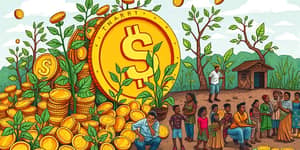
As awareness of global challenges deepens, so too does the desire for investments that deliver more than just financial returns. Today’s forward‐thinking investors seek to generate positive societal returns alongside competitive performance. By aligning portfolios with the United Nations Sustainable Development Goals (SDGs), individuals and institutions can become catalysts for change while pursuing long‐term value.
The SDGs encompass 17 ambitious objectives adopted by all 193 UN member states, ranging from poverty alleviation to climate action. They provide a shared blueprint for building a more equitable and resilient world by 2030. Integrating these goals into investment decisions transforms capital into a force for good, enabling investors to back innovators tackling the most urgent global issues.
Traditional finance often prioritizes short‐term gains. In contrast, SDG investing encourages a holistic view, recognizing that sustainable outcomes and financial performance can reinforce each other. Many studies suggest that companies excelling in sustainability practices tend to exhibit superior risk management, operational efficiency, and reputation—factors that translate into enhanced returns over time.
Moreover, investors are increasingly held accountable by stakeholders demanding transparency and impact. By committing to the SDGs, asset owners signal their dedication to active stewardship and engagement, bridging the gap between capital allocation and societal progress. This alignment elevates portfolios from mere collections of assets to dynamic agents of transformation.
In recent years, the financial industry has responded with a growing array of SDG-themed offerings. Thematic funds focused on renewable energy, clean water, gender equality, and healthcare innovation have proliferated, providing accessible vehicles for investors to support targeted goals. Fixed income markets have also embraced sustainability through green and social bonds, directing proceeds to projects that directly advance SDG outcomes.
Despite this momentum, the supply of truly SDG‐aligned products remains limited relative to overall market volumes. According to Morningstar’s 2024 report, while thematic SDG funds are expanding, most global assets are not yet committed to strictly SDG‐focused strategies. Nevertheless, institutional and retail interest continues to climb, driven by both values-based motives and a growing recognition of the long‐term financial advantages of sustainable practices.
Investors can choose how intensively to integrate SDG criteria, balancing impact and diversification. On one end lies broad integration, which excludes only those companies that clearly contravene specific goals. On the opposite end is focused alignment, where only firms with strong, demonstrable contributions to one or more SDGs are included.
This impact-diversification spectrum empowers investors to tailor their portfolios according to risk tolerance, values, and desired outcomes. Whether aiming for a broad sustainable tilt or laser‐focused impact, clear strategy selection is critical for success.
Translating ambition into action requires a systematic approach. The following steps guide investors through the alignment process, ensuring decisions are driven by data and accountability:
By following these stages, investors move beyond surface‐level claims to embed rigorous alignment metrics and oversight into their decision making.
SDG investing is not without hurdles. Data gaps, inconsistent methodologies, and greenwashing risks can obscure true impact. Many companies fail to disclose the detailed metrics needed for comprehensive SDG assessments, and rating providers may diverge in their evaluations.
To safeguard integrity:
Through diligence and transparency, investors can mitigate greenwashing and foster genuine progress toward the 2030 Agenda.
Regulatory momentum is accelerating worldwide. Policymakers are introducing frameworks to direct capital into sustainable activities, from EU taxonomy standards to emerging requirements in Asia and the Americas. These developments will broaden the SDG investment landscape, driving new product innovation and deepening markets.
Simultaneously, asset managers are embedding SDG targets into portfolio construction, active ownership practices, and corporate dialogues. As evidence mounts on the resilience and performance benefits of sustainable strategies, demand for SDG-aligned products is set to surge, unlocking greater capital flows toward global priorities.
Aligning your portfolio with the SDGs offers a powerful path to marry financial objectives with meaningful, long-term impact. With robust measuring practices, deliberate strategy selection, and ongoing stewardship, investors can become architects of positive change. The choices made today will shape not only the fate of portfolios, but the future of communities and ecosystems worldwide. Embrace the SDGs, and let your investments be a force for global progress.
References













